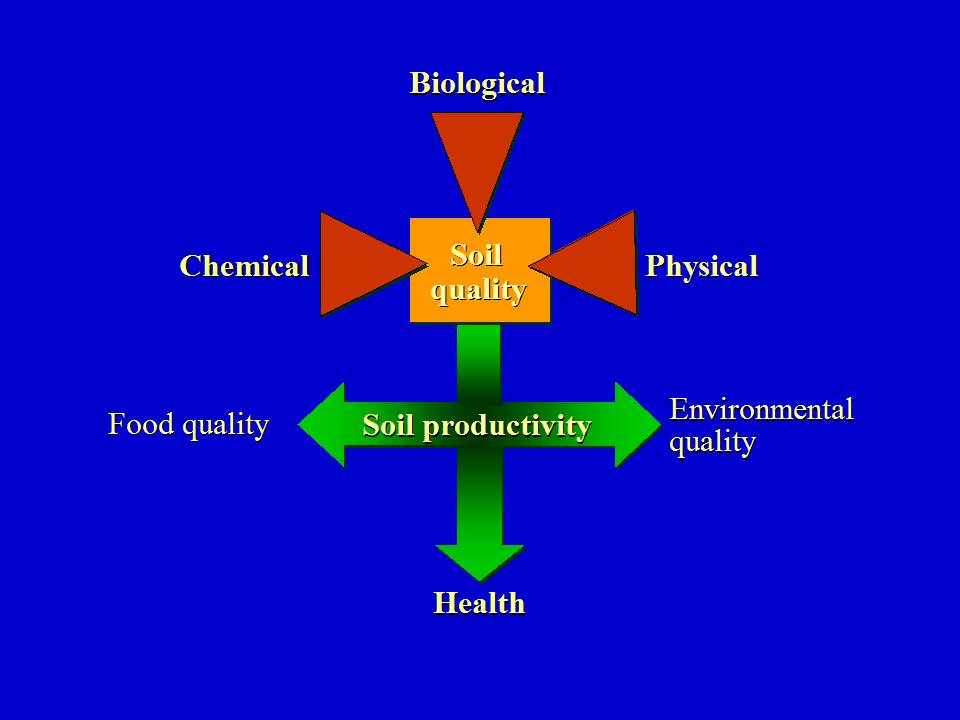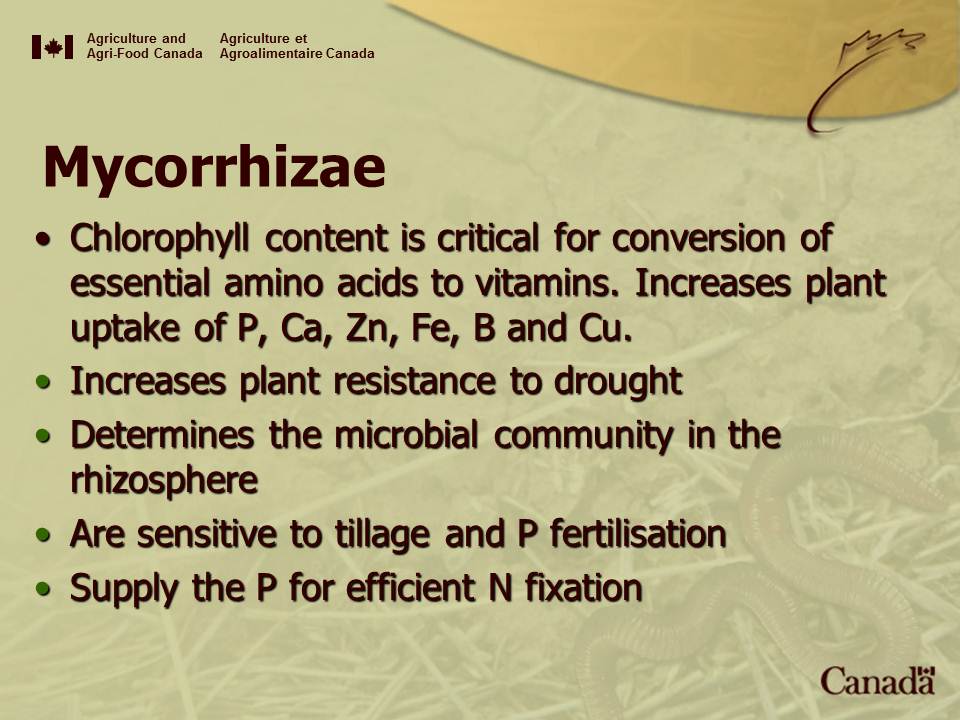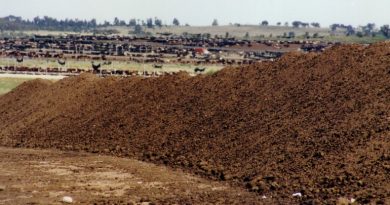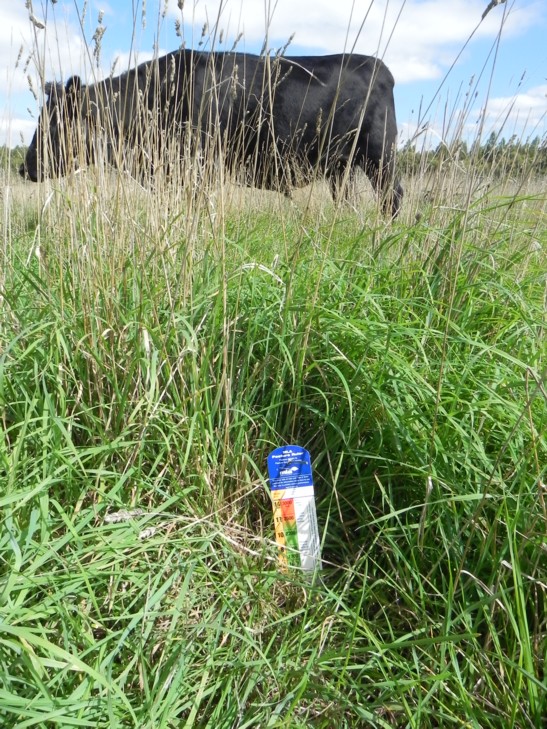Soil fertility management in Australian farming
In 2006 Dr Maarten Stapper presented his vision for the development of soil health, fertility and food quality to the Third OFA National Organic Conference. What follows is an edited version of that presentation.
Management of agricultural production systems has to evolve around the soil for the soil to feed the plant. Carbon is of critical importance and needs to be maximised through capture with solar energy, and optimum storage and use. A healthy soil is whole, having its physical, chemical and biological components functioning and in balance. Continuous use of acidic synthetic fertilisers, insecticides, fungicides and herbicides disrupt this delicate balance.

Organic farming has recognised this but needs to follow its leaders to an active soil management. Before we can hope to change things, we must understand why they are the way they are.The long recommended use of fertilisers, pesticides and other synthetic chemicals to address problems in agricultural production has been leading to poor soil health and resistance in insects, diseases and weeds. More soluble nitrogen fertiliser makes plants more susceptible to diseases and insects, and increases weed problem. As renowned soil scientist Dr William Albrecht said “insects and diseases are the symptoms of a failing crop not the cause of it”.
The petrochemical solution is not working – all such production systems in the world are on a treadmill, needing more and more chemicals and fertilisers to keep yields up as natural soil processes are increasingly weakened in their role to support plant growth. This makes soils and plants dependent on these inputs. Such production systems are not sustainable and we currently harvest the outcomes of the gross oversimplification of fertilisation and ‘plant protection’ practices.
Agricultural systems are addicted to the soluble acidic-based NPK fertilisers and this addiction, supported with pesticides and herbicides, leads to soil degradation. The humic substances which are pivotal in soil fertility and plant nutrition have gradually been destroyed. Humus is the bond between living and non-living parts in soil and is part of the soil organic carbon that has severely declined since cultivation started.
Curing any addiction is a slow process, requiring understanding, patience and commitment. This, however, has not yet been accepted by a science world which seems driven by commercial interests. Those in organic-biological farming remain the exception.
To improve soils, farming methods in annual cropping have recently changed from intensive cultivation to minimum tillage and no-till systems as being environmentally better and with good returns. Such ‘sustainable’ systems, however, are empirical as they are developed without a full understanding of long term outcomes. The impact of associated intensive chemical use is the unknown factor. It is the combined and repeated impact of chemical use that affects the system, factors not tested in product registration process or long-term field research.
Negative soil related developments in these ‘new’ systems have already been identified in Queensland. Current practices continue with the use of harsh chemicals and ignore the delicate balance of humus, microbes, trace minerals and nutrients in the soil.
Management has resulted in marked losses in soil organic carbon (including humus) and greatly reduced diversity and abundance of microbes (algae, bacteria, fungi, nematodes, protozoa) and larger organisms (eg. mites, ants, beetles, worms) in the soil foodweb. This exposes roots to harsh conditions and greatly diminishes the capacity of the soil to feed plants as well as making roots more sensitive to saline and acid condition and the whole plant susceptible to pests and diseases, and requiring plants to be spoon-fed with fertilisers and protected by chemicals.
Disruption of soil biological and chemical processes usually leads to soil physical problems, such as reduced infiltration, compaction and erosion. Conventional farming is searching for answers to increasing soil organic matter (~1.4 times organic carbon) and microbial biomass .
Farms a complex ecosystem
A sustainable farming system is a complex ecosystem with non-linear dynamics that exist in alternate stable states, each state having their own threshold. When a critical threshold is breached, recovery to a sustainable system will become difficult or impossible. For unstable farming systems to again become sustainable, we have to understand ecosystems before we can take care of them.
Sustainable ecosystems are resilient, having the capacity to absorb disturbance and reorganize over a wide range of conditions before ever reaching a critical threshold. They are characterized by many interactive components within and between scales. Adaptability and transformability are two other characteristics of ecosystem response to change.
Adaptability is the capacity of actors in the system to manage its resilience and transformability is the capacity to become a fundamentally different system when existing system remains unsustainable. The underlying aims towards sustainable farming systems are conservation of soil, water and energy resources to maximise food production. This goes back to the functioning of ecosystems, the interactions between a community and its non-living environment.
Agroecology is an approach in agricultural development which draws on modern ecological knowledge and methods. It is defined as the application of ecological concepts and principles to the design and management of sustainable agroecosystems .
Understanding functioning of ecosystems requires a ‘big picture’ holistic approach. The knowledge of different groups in the living world and how they interact with other groups is here more important than in-depth knowledge of individual species. Studying the latter, however, and single issues in general, seems to be more popular and advanced. Then again, we can’t understand a system by combining available knowledge of component single issues. That is, the holistic ‘whole’ is not the sum of reductionist ‘detail’. This also needs to be realised in simulation modelling of systems.
Symbiosis – the balanced, mutual interdependence of different species – is a protective mechanism in nature which develops in response to compatible needs. Self-organisation keeps natural biological systems in balance. Interactions between organisms are powerful evolutionary forces. Increased complexity and diversity of species and interactions within the soil foodweb promote balance and higher plant productivity.

The whole should be considered as an integrated system being resistant and resilient to change through an abundant diversity of organisms. Plants depend on beneficial soil organisms to protect them from pathogens, to help them obtain nutrients from the soil, and to break down toxic compounds that could inhibit growth. Soil organisms create a living, dynamic system that needs to be understood and managed properly for best plant growth. If the balance of micro-organisms is wrong, fertilisers and pesticides can’t help recover plant vigour.
Understanding soil health requires knowing which organisms occur, which ones are working, how many are present and whether they are the right kinds for the desired plants . Soil health thus requires improvement of biodiversity in paddocks and catchment to enhance natural predation in a functional soil foodweb (FAO 2006).
This may be achieved by doubling soil organic carbon (the foundation for a living soil) minimising use of chemicals and the establishment of shelterbelts for improvement of soil surface microclimate and home to an important part of the soil foodweb. The paddock soil then becomes resistant to change and, being resilient, is able to recover from disturbances caused by extremes in weather or management. Such soils will remain more productive with climate change as living soil organisms can adapt. It will also help slow climate change by sequestering carbon .
Science too narrow focused
Current specialisation in agricultural science has resulted in research within very narrow boundaries. This has ensued linear, mechanistic thinking, which doesn’t allow room for synergies, and results in confusion between cause and effect. Soils, for example, have become partitioned in separate isolated fields of chemistry, physics and biology, with specialization within each of them.
Soil degradation and resulting healthy soils issue, therefore, can’t be solved with many individual research projects conducted by various specialists. In nature every thing is linked with everything else. These circular, web-of-life phenomena have to guide our applied field research.
Much of the sustainability research is fiddling at the margins of entrenched methods and tends to work on symptoms rather than primary cause of problems, as evidenced by appearance of new problems. It is not simply a matter of doing better what we do. ‘Best practice’ locks us in status quo which is still not good enough!
If agricultural research is to deliver anything approaching sustainability, therefore, we need to change the science paradigm. Or as Dr Albert Einstein said: “No problem will be solved with the same level of thinking that created it in the first place”. Over generations research has become increasingly “reductionist”, that is, reducing and outlining systematically the area of interest and the disciplines to be studied.
While this approach has delivered a lot of knowledge about the workings of particular crops, pastures, livestock, insect pests, chemicals, etc, focussing too intensely on closed systems with narrow boundaries– on single, isolated components of the bigger “real-world” system – means we are blind to larger cycles and patterns within which component parts exist.
New problems keep emerging as each of them are dealt with as single issues resulting in partial solutions that don’t necessarily solve the problem, for example, acidity (with lime) and salinity (with lowering ground water). Partial solutions tend to equate a single solution with the cause of the problem but lime and ground water, for example, are not always directly related with acidity and dryland salinity respectively.Alternative causes for dryland salinity have been derived from experiences with soil management in New South Wales, Victoria and Western Australia.
Experimental results of individual components are thus difficult to apply to paddocks, being complex systems in time and space. What does an ‘average’ mean in a paddock? Other management factors are likely to be working against individual research results, thereby inhibiting change. Hence, problems continue to emerge in agricultural production systems. These are now proposed by science to being solvable with genetic engineering. Another oversimplification in our fragmented agricultural science, band-aids over the real cause of our problems – degrading soils.
The standard multi-factorial research methodology seems ill-suited to study complex biological systems where everything is linked with everything else. To obtain functional outcomes, no factors may be considered ‘constant’ in trials while varying a few important’ factors to quantify their impact.
Also the boundary conditions of research objects chosen by specialists (eg pots & small plots in growth chamber, green house or research station) are often not appropriate and representative of real ecosystems (especially microclimate) and create results not transferable to farming systems level. Comparative analysis is needed on a commercial production scale. Questions arising from such studies then need answers through reductionist science.
New methodologies and directions of research are required in the search for resilience, to achieve reproducible and predictable outcomes in farming systems across agroecological zones. Such research needs to be planned, executed and analysed by a transdisciplinary team working across ecosystems at representative scales, agroecology. This is to allow measurement and observation of expressions of the multitude of interacting components within and between different scales of the farming system.
Plant health and animal health, for example, are dependent on availability in the right balance of minerals, but this is still regarded as ‘alternative’. To reach sustainable agriculture we have to look at the whole system and develop holistic tools with agricultural science that bring together, from across disciplines, the knowledge obtained through analytic reductionism, without getting lost in small component detail of the ‘which single factor? the how? the why?’
Such tools are unlikely to be quantitative, hard systems, as dynamic interactions by soil organisms are too complex and affected by small spatial and temporal changes in management and climate. Therefore, a soft systems approach is required, synthesising knowledge into management guidelines for sustainable land use involving careful monitoring of status.
Australia’s public R&D in this research direction is minimal and seems to be one of the lowest of OECD countries. However, we need to search for productive agricultural systems with reduced usage of petrochemicals and energy, and not rely on ‘Techno-Fantasy’ to help us out.
Management working with nature
As managers using the soils, what do we look at, what do we (want to) see? After decades of regular use of single-super phosphate some farmers and graziers stopped using it when they became aware of the negative impact it had on soils and trees, caused by the acidic nature of the fertiliser, muriate of potash (potassium chloride) being as detrimental to biology.
We can learn to use the power of nature rather than fighting it with synthetic chemicals and unproven new technologies in a war we can’t win. Organic farming is surging and biological agriculture is emerging as a sophisticated farming system in transition between current and organic. Both benefit from reintroduction and enhancement of humic and soil biological activity which was already in the foundation of biodynamic farming.
In contrast to the Organic standard, biological farming allows minimal use of the most microbe-friendly fertilisers and herbicides with humic additives and molasses or sugar to enhance effectiveness and reduce damage to microbes. This requires ever smaller quantities as the system is balancing and moving towards Organic, a process that occurs much quicker when actively managed with biological inputs.
Management aims to balance chemistry, physics and biology in the soil aided by improved organic carbon content, appropriate mineral balance and a diverse and abundant soil life. Thus stabilising our fragile soils and creating a sponge that stores and makes available required plant foods and facilitates prolific root growth. Soil biology helps build and maintain soil structure to secure aeration and prevent compaction. A balanced biological soil will have the maximum levels of available minerals coinciding with maximum demand by plants.
The farming system is intended to enhance biological activity in soil and on foliage, enabling a balanced supply of required minerals for effective plant growth, providing energy to plants and grazing animals, and building internal resistance to diseases and insects. Soils are actively remineralised, inoculated with soil microbes and supplied with food for microbes, all required to attaining and maintaining an energetic balance.
With cropping and in orchards, the soil should be covered most of the time by plants or stubble to protect from high temperature and water loss. A litter layer as cover will be a continuous source of carbon for soil organisms and also provide temperature insulation and water retention. Green manuring provides opportunities to convert rainfall into soil fertility.
Rhizosphere
The rhizosphere is the area of intense biological and chemical activity close to the root inhabited by soil microbes feeding off exudates from the root, thus facilitating nutrient supply to the root and protecting it from pathogens. Fertiliser with the seed at sowing decreases root growth, root branching and the number of root hairs. Applying microbes, humic substances and food for microbes with the seed generally results in a vigorous seedling with a thick rhizosphere, prolific branching and many root hairs, without a need for conventional seed-dressing.
Microbes keep colonising the roots as they grow thus providing a continuation of that good rhizosphere. It has been demonstrated that an active rhizosphere can be created in degraded, acid or saline soils with that neutral zone around the root allowing vigorous plant growth. Such a carbon pump into the soil will improve that soil and the increasing soil biology will segregate negative compounds. Carbon may thus help stop dryland salinity.
Inputs
The most important inputs are foods for the soil microbes with the most effective one being carbon exudates from roots of growing plants. Maximising the time of active plant growth therefore is most important. Rotational, cell or planned grazing, for example, facilitates root growth and delivers more carbon to the soil than set-stock grazing.
Another example is pasture-cropping where winter crops are sown into summer-active perennial pasture. Residual stubble and roots are also important sources of carbon. Stubble, however, needs to be broken down to be available for soil organisms. To facilitate this a stubble digest, containing cellulose digesting fungi and some urea to lower the C:N ratio, can be sprayed on a slashed, spread and rolled stubble with or without incorporation. Such decisions depend on the amount and kind of stubble, paddock history and soil biological activity, whether or not such bugs are already present.
Compost is an important and effective method to deliver carbon, organic compounds, minerals and microbes to the field as a readily available organic fertiliser. The best compost would contain up to 90% of the carbon in microbial biomass, that is, bacteria, fungi, protozoa and nematodes. Compost tea can be extracted from good compost and sprayed in orchards and on broadacre crops and pasture.
Biological farming outcomes
Farms having achieved healthy soils look and smell good with presence of dung beetles on pastures and no slugs or snails in cropping. Plants growing on those farms have less disease and insect damage, less frost damage (high brix, sugar content in plant sap), have great root systems and taste better.
Biological farming can reduce fertiliser use by up to 70% and eliminate fungicides and insecticides within three years of commencing. Such personal statements about achieved outcomes are available in newsletters and articles in rural magazines but independent quantification is rare. Most methods haven’t been proven scientifically, failures are experienced if methods or conditions are not right, and are therefore rubbished by many.
Improved soil biological activity becomes visible through presence of earth worms and many creepy crawlers. Common soil problems have been alleviated such as acidity, salinity, compaction, water logging and wind erosion (no dust behind sheep). Water holding capacity has been improved which shows, for example, on irrigation farms through a 2-3 day extension between irrigations.
Water retention seems greatly improved as soils at the surface remaining moist longer. Improved soil organic carbon manifests itself through many factors. A study in the Wagga Wagga, NSW district quantified the value of soil organic carbon as $116 per one percent increase, resulting from better water holding capacity and nitrogen availability.
As in current systems, not all inputs are always effective. Success in biological systems depends on many factors working together. Soil organic carbon formation from roots and stubble, for example, requires important nutrients to be available as the C:N:P:S ratio of organic carbon is stable across the world. Something can fail if a catalyst is missing. When everything connects we can get responses beyond expectation as synergies (‘1+1=3’) start to occur. However, we are on the right track.
Road to Sustainability
Sustainable agriculture has been given many definitions. However, it is a process of social learning, not lead by a science with overemphasis on production and neglect of maintenance functions within agroecosystems. Active management of the soil foodweb, remineralisation and greatly increasing the required soil organic carbon is essential to reaching ecological sustainable production systems and a (less-un)sustainable agriculture. Such a system produces healthy food with good taste, structure (i.e. calcium and silica availability) and extended shelf-life.
Trees are important as shelterbelts in a dry, wind-swept continent. There are examples in many districts where farms converted say 10 percent (often from 0.5) of their property to trees and wetlands, and resulting in improved productivity by being less sensitive to droughts.
Organic-biological farming methods also seem promising on a landscape and catchment scale as they result in farming systems which stimulate biodiversity, minimize use of synthetic chemicals, stabilise the soil, and balance hydrology thereby reducing off-farm impacts.
Contact:
Maarten Stapper Biologic AgFood Weston Creek ACT , www.biologicagfood.com.au


